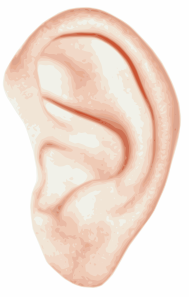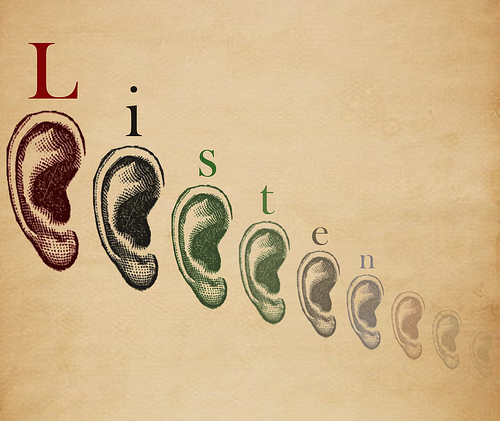 Lately, I’ve been thinking about ways to keep students focused on the sound they are creating when they play and preventing them from becoming overly sight-oriented. Being a good musician is so much more than accurately executing what is written in the score, after all. Students should be learning to use their ears and listen to what sounds they are making too!
Lately, I’ve been thinking about ways to keep students focused on the sound they are creating when they play and preventing them from becoming overly sight-oriented. Being a good musician is so much more than accurately executing what is written in the score, after all. Students should be learning to use their ears and listen to what sounds they are making too!
Here are somes thoughts I had for keeping focus on the sound during the piano lesson:
- Be the student’s ear. Sometimes students don’t realize what they sound like. Let the student know what you are hearing, and ask them if this is what they were intending to sound like. For example, perhaps a student’s LH alberti bass pattern is sounding rather heavy. Let them know that you are having trouble hearing the melody line in the RH, and ask them what they could do about it. Oftentimes, student’s issues are simply due to the fact that the student does not realize what is happening. Once you point it out to them, they will hear it too and will want to find a way to improve it. (Another great tool is to record the student playing their piece and play it back for them.)
- Show, don’t tell. My high school English teacher used to preach this phrase to us all the time for writing papers (instead of writing that a character was happy, for example, write that the character was humming and skipping down the sidewalk). I think this phrase applies well to music too! Rather than always telling the student what to do differently or what they are doing wrong, show the student. Whenever possible, sing or play for the student so they can hear for themselves what you are trying to communicate to them.
- Consider the aural effect. Even when you are discussing something on the page such as dynamic markings, keep your ultimate focus (and the student’s) on the sound. Go beyond simply pointing out the dynamic markings – but try to help the student imagine what kind of effect the composer was trying to achieve by indicating the dynamic markings the way s/he did. Create a story for the piece so that the student has a mental image to relate to various changes and passages in the score.
- Think orchestrally. It may seem strange to think of a piano score as an orchestral score — but most composers and performers do this, and it is a helpful thing for students to do too. For example: suppose a student is having difficulty playing a passage with thick chords piano as indicated. If the passage is compared to a section of French horns, the focus changes: instead of thinking about how difficult it is to play big chords softly on the piano (this kind of thinking usually produces tension, which in turn makes it even harder to play softly), the student is thinking about making warm, beautiful brass-like sound (tension is gone and the focus is on the sound). There are many other advantages to thinking orchestrally; I could write another whole blog post on this! (Maybe sometime I will!)
Music is an art form for the ears, after all, so students should be learning to use their ears! =)
Photo credit: clker



This is great Joy. I agree that getting students to listen and like what they hear should be a primary goal!
Great post! It’s so easy to only stay “in your head” when practising and treat it mechanically. Having a periodic reminder to switch your attention to your ears and the sounds you’re creating can be hugely effective in improving your playing.
I definitely agree with thinking orchestrally. It is something that has helped me in my own personal practicing/performance in the past, so thank you for the reminder! I’m sure it’ll benefit my students as well.